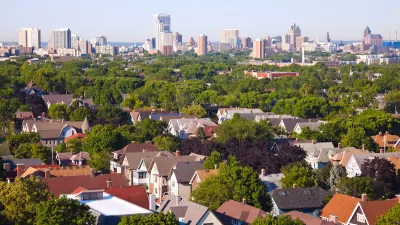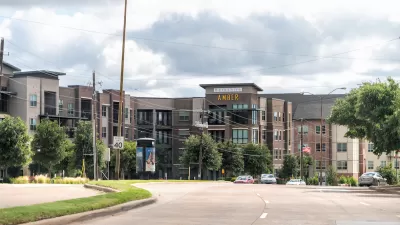While zoning is just one of many factors impacting racial integration and economic mobility, it is an issue with some of the more straightforward solutions.

In a policy brief for George Mason University’s Mercatus Center, Salim Furth describes two new studies from Greater Boston and Minnesota’s Twin Cities that quantify the relationship between zoning restrictions and racial integration in neighborhoods.
According to Furth, “They find that zoning for multifamily housing is associated with substantially larger non-White population shares than zoning for single-family housing.” While integration is impacted by a variety of complex causes, “Unlike most other barriers to full racial integration, zoning uniquely can be addressed with straightforward, low-cost policy change.”
Furth argues that the relationship is straightforward: “Zoning determines which housing types predominate in an area. Some housing types are mostly owned; others are mostly rented. And ownership rates differ sharply by race.” According to Furth, “permissive zoning allows more families to solve their own problems using their existing resources.”
The brief details the results of each study, noting that “A weakness of both papers is that they are snapshots taken at the end of a long co-evolution of zoning, structures, and race,” and that the research is limited to specific milieus. Nevertheless, “The chain of exclusion offers a clear framework for understanding the likely effects of zoning in other cities. Data on racial homeownership patterns and housing type ownership and rent splits are readily available and can guide local discussions of zoning as a barrier to integration.”
The brief goes on to offer some policy solutions, namely allowing rental-friendly housing in more areas and promoting the integration of different housing types. As Furth notes, “Allowing, or even encouraging, people to live near those who differ in race, ownership status, and income does not guarantee that they will become friends,” but it can help open up economic and social opportunities for more households.
FULL STORY: New Research Shows How Zoning Slows Racial Integration

Alabama: Trump Terminates Settlements for Black Communities Harmed By Raw Sewage
Trump deemed the landmark civil rights agreement “illegal DEI and environmental justice policy.”

Planetizen Federal Action Tracker
A weekly monitor of how Trump’s orders and actions are impacting planners and planning in America.

The 120 Year Old Tiny Home Villages That Sheltered San Francisco’s Earthquake Refugees
More than a century ago, San Francisco mobilized to house thousands of residents displaced by the 1906 earthquake. Could their strategy offer a model for the present?

In Both Crashes and Crime, Public Transportation is Far Safer than Driving
Contrary to popular assumptions, public transportation has far lower crash and crime rates than automobile travel. For safer communities, improve and encourage transit travel.

Report: Zoning Reforms Should Complement Nashville’s Ambitious Transit Plan
Without reform, restrictive zoning codes will limit the impact of the city’s planned transit expansion and could exclude some of the residents who depend on transit the most.

Judge Orders Release of Frozen IRA, IIJA Funding
The decision is a victory for environmental groups who charged that freezing funds for critical infrastructure and disaster response programs caused “real and irreparable harm” to communities.
Urban Design for Planners 1: Software Tools
This six-course series explores essential urban design concepts using open source software and equips planners with the tools they need to participate fully in the urban design process.
Planning for Universal Design
Learn the tools for implementing Universal Design in planning regulations.
Clanton & Associates, Inc.
Jessamine County Fiscal Court
Institute for Housing and Urban Development Studies (IHS)
City of Grandview
Harvard GSD Executive Education
Toledo-Lucas County Plan Commissions
Salt Lake City
NYU Wagner Graduate School of Public Service





























